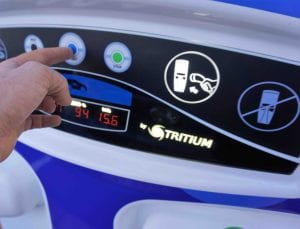The Australian government’s annual ’emissions projections’ report contains a surprisingly detailed wealth of insights about exactly how the country is failing to curb emissions in pretty much every single sector, with the exception of electricity.
I’ve explored the general consequences of the report here, and talked about the electricity sector specifically here.
It is worth noting that outside of the electricity sector, emissions from cars, trucks, buses, boats and planes are the second biggest sector by total volume of emissions. Of that sector, the biggest chunk is easily passenger vehicles. In 2020, cars alone will comprise 45 megatonnes out of Australia’s total of 531, around 8 per cent of the country’s total emissions.
If we exclude aviation and shipping and look at electricity generation and road transport only, a full half of Australia’s emissions (excluding land use) is simply sitting there ready to be fully decarbonised, with existing technology.

 In both data sets above, but particularly the transport sub-sector, you can really see the dent that Covid-19 has left on emissions. A massive, country-wide reduction in the usage of fossil-fuelled vehicles has resulted in a very noticeable change. But as I wrote earlier this year, it became clear that Australia returned to normal usage of cars a few months ago; small outbreaks of COVID19 notwithstanding.
In both data sets above, but particularly the transport sub-sector, you can really see the dent that Covid-19 has left on emissions. A massive, country-wide reduction in the usage of fossil-fuelled vehicles has resulted in a very noticeable change. But as I wrote earlier this year, it became clear that Australia returned to normal usage of cars a few months ago; small outbreaks of COVID19 notwithstanding.
This was confirmed in a recent report from the Australia Institute, which shows that emissions from transport have normalised before the year’s end, and backed up again by an analysis of similar data by NDEVR, who found that for the first quarter of FY2021 (July to September 2020), transport emissions will likely end up 5% above 2005 levels.
If anything, COVID19 has shown us exactly the wrong way to go about creating change in the transport sector. The pandemic has, of course, had a range of horrific impacts, including loss of life, separation from family and friends, the erosion of cultural and social norms and major economic impacts at every scale. It was inevitable that it would have some impact on the emissions footprint of society, and most importantly, there will be a significant rebound next year as the usage of fossil fuelled vehicles returns to normal.
The electricity sector gives us an insight into what good emissions should look like: they should be surprising. The historical forecasts of Australia’s electricity sector each were extremely optimistic about coal and gas, and each were revised downwards each year, creating a ‘hedgehog’ chart.
This suggests a deep, structural change within Australia’s electricity sector; something that isn’t a blip or an aberration, and something that blindsides forecasters and modellers prone to leaning towards the status quo. The transport sector has no such hedgehog because there have been no policy mechanisms at a state or federal level to strongly and rapidly incentivise a switch to zero carbon transport alternatives, like electric buses and bicycles.
If you compare each year’s report, the ‘actual’ emissions are pretty much in line with predictions from previous year: There is a deep well of potential action within Australia’s transport sector – if a decarbonisation plan is paired in tandem with the electricity sector’s structural change and both are accelerated, the scale of change in Australia’s emissions footprint would be truly massive and very rapid indeed.
There is a deep well of potential action within Australia’s transport sector – if a decarbonisation plan is paired in tandem with the electricity sector’s structural change and both are accelerated, the scale of change in Australia’s emissions footprint would be truly massive and very rapid indeed.
As the year draws to a close, this seems to be core message within Australia’s climate and energy politics: missed opportunities are looming large over the people in charge.









